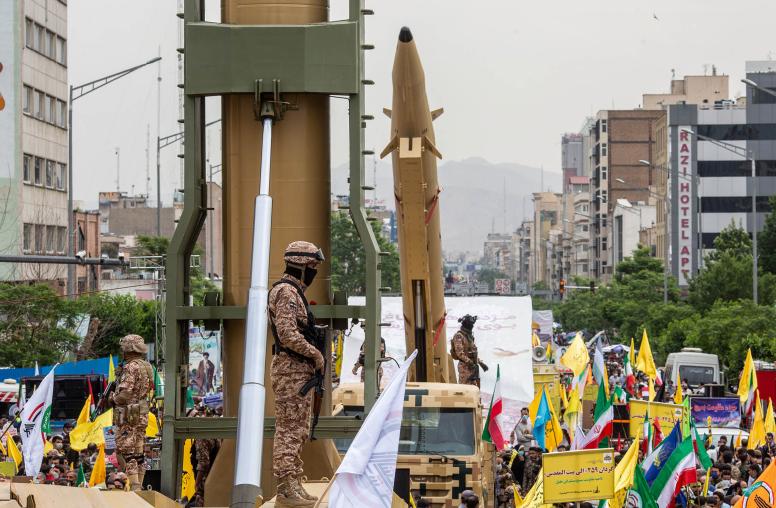On the Issues: Commemorating the U.S. Embassy Seizure, Thirty Years Later
On Wednesday, Iran will hold a parade and demonstration to mark the 30th anniversary of the U.S. embassy seizure. The opposition is now mobilizing followers to turn the commemoration into a mass protest. Robin Wright, a Jennings Randolph fellow at the U.S. Institute of Peace and author of four books on Iran, covered the revolution and the hostage drama.
Posted: November 2, 2009
On Wednesday, Iran will hold a parade and demonstration to mark the 30th anniversary of the U.S. embassy seizure. The opposition is now mobilizing followers to turn the commemoration into a mass protest. Robin Wright, a Jennings Randolph fellow at the U.S. Institute of Peace and author of four books on Iran, covered the revolution and the hostage drama. She has attended several commemorations over the past 30 years. She is available for comment at 202 320-0888 or wrightrb@gmail.com.
- What is significant about the 30th anniversary of the U.S. Embassy seizure?
- Who is likely to prevail?
- Why is the commemoration important?
What is significant about the 30th anniversary of the U.S. Embassy seizure?
For the first time in three decades the central issue will not be the United States. The commemoration will be a showdown between the regime and its feisty opposition over the future of the Islamic republic itself.
Last year, students paraded down the street shouting anti-American slogans and burning an effigy of President Bush. This year, opposition leaders and thousands of posters circulating on the internet are calling on Iranians to parade in front of the graffiti-covered embassy walls against their own controversial president, Mahmoud Ahmadinejad, and Supreme Leader Ayatollah Ali Khamenei.
The opposition is hoping to turn the commemoration into the largest protest since the mass rallies immediately after the disputed June 12 presidential election.
Who is likely to prevail?
The regime has the power, personnel and tools to crack down on the opposition, as it has repeatedly since the disputed presidential elections. It has also warned against any other “illegal” public gathering and announced that it will mobilize three million of its own supporters to keep the commemoration on its anti-American message and to prevent alternative anti-regime protests.
In contrast, the opposition has little beyond its public voice and numbers. Opposition clerics, politicians and websites have signaled to followers over the past week that they want to avoid any violence even if the regime uses physical force. Yet long-term, just showing up to protest will signal that the opposition is still alive and determined to take a stand, despite the growing risks.
The anti-regime protests also come at a time the world’s only modern theocracy is facing international pressure over its controversial nuclear program. For the first time, an Iranian regime is being squeezed in unprecedented ways both at home and abroad.
Why is the commemoration important?
The Nov. 4 anniversary has a unique place in Iran’s foreign policy. It often serves as a barometer of public opinion. Over the past eight years, the rallies were intensely anti-American because of fears that President Bush would launch a military attack. But under reformist President Mohammad Khatami, between 1997 and 2005, there were some unexpected overtures at commemorations. In 1998, one of the three masterminds of the embassy takeover spoke at the event and actually invited the 52 former American hostages to return--as Iran’s guests.
The Nov. 4 commemoration is also sensitive because it symbolizes the regime’s biggest long-term problem – its youth. Students seized the embassy and only won regime approval after the fact. Most of the anti-regime protests over the past 30 years have been led by students. And because of a demographic bulge, they are becoming the most significant voting bloc.
Their political apathy in 2005 helped put Ahmadinejad in office; their current activism in myriad forms has fueled the most vibrant civil disobedience campaign in the world.



